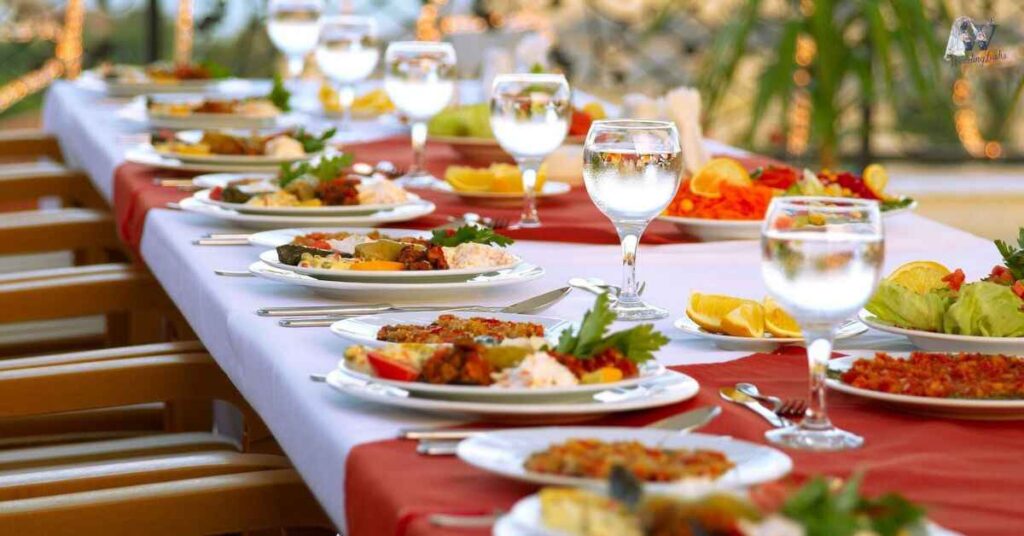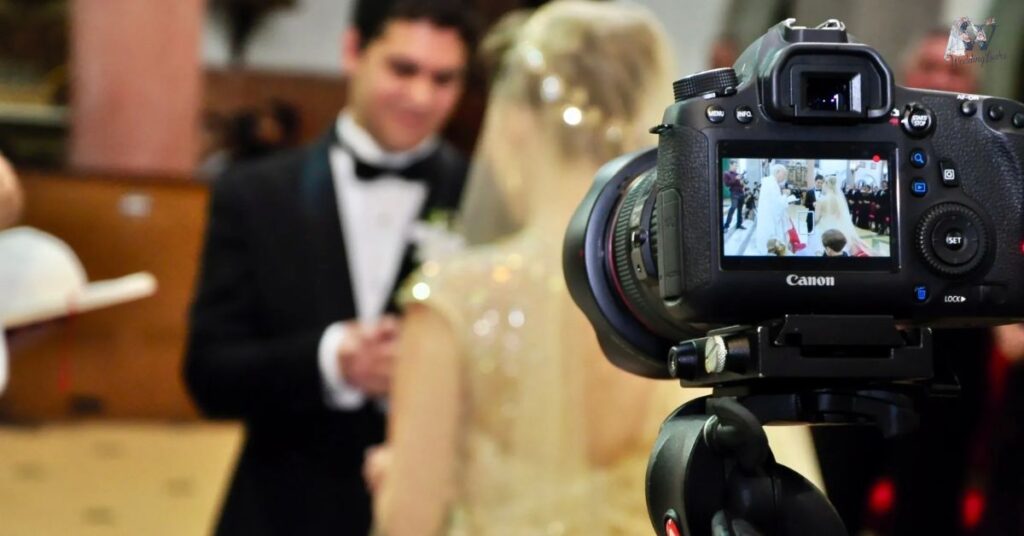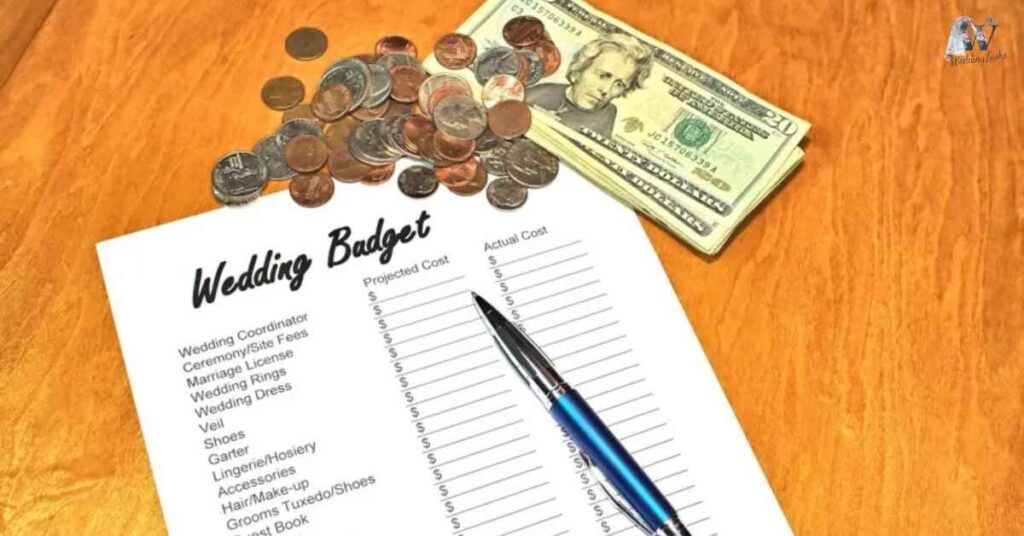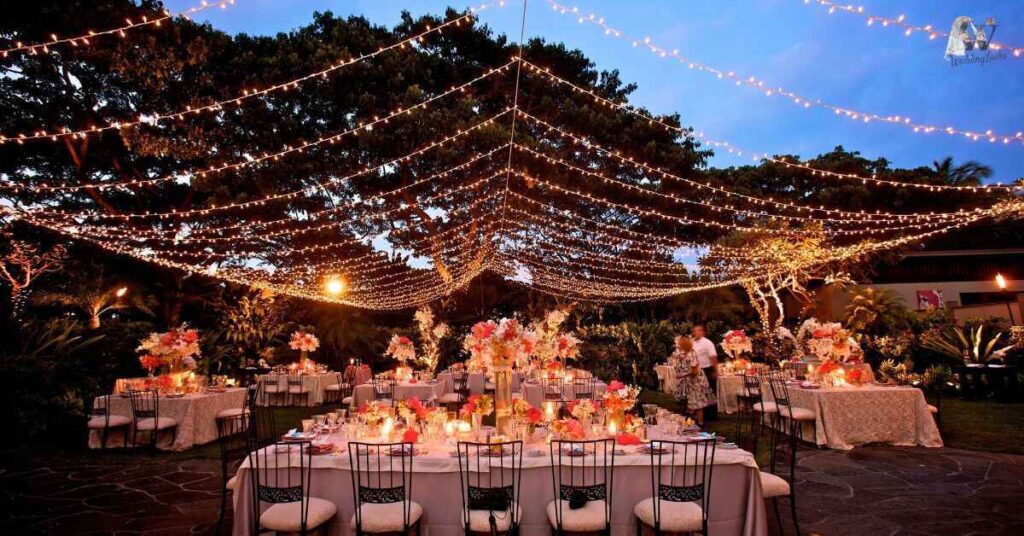Planning a wedding budget secrets can be overwhelming, especially when it comes to managing costs. Understanding the average wedding budget is key to creating the celebration of your dreams without overspending. From venue to catering, each decision shapes the final price tag.
Uncovering the secrets behind average wedding costs reveals where couples tend to splurge and where they can save. Whether you’re planning a lavish event or an intimate affair, knowing these budget essentials will help you make informed financial choices. Let’s dive into the numbers and smart strategies for wedding budgeting success.
Average Wedding Budget Basics
The average wedding budget covers all major expenses like venue, catering, and attire. Most couples spend the most on the venue, which can take up nearly half the budget. Catering, photography, and entertainment also play a big role in the total cost. Smaller details like flowers and décor add up quickly. Knowing these basics helps in better planning.
Budgeting for a wedding means prioritizing what matters most. Start by listing your must-haves and allocate funds accordingly. Consider how guest count impacts each expense. Make room for unexpected costs by leaving a cushion in your budget. These basics will keep you on track for a stress-free wedding day.
Determining Your Overall Budget
Determining your overall wedding budget is the first crucial step in planning. Start by discussing finances with your partner and setting realistic expectations. Consider how much you’re willing to spend and where the funds will come from.
Once you have a total amount, break it down into categories like venue, attire, and food. Prioritize what matters most to you both, allowing room for flexibility. This will keep you on track and prevent any surprises down the line.
Allocation of Funds
Allocating your wedding funds ensures each aspect of your day is properly covered. Divide the total budget into key areas like venue, catering, and photography. Adjust amounts based on your priorities to stay within limits while meeting your vision.
Prioritizing Major Expenses
Prioritizing major expenses helps ensure your wedding budget is allocated effectively. Focus on key areas such as the venue, catering, and photography, which often consume the largest portions of your budget. By identifying and funding these priorities first, you can make informed choices about where to allocate the remaining funds.
Also read this: Find The Best Wedding Venues Quickly
Distributing Funds Across Key Categories
Distributing funds across key categories helps ensure that every aspect of your wedding is covered. Allocate the majority of your budget to essential areas like the venue and catering, while setting aside amounts for attire, entertainment, and other services. This balanced approach will help you stay organized and avoid overspending in any one area.
Adjusting for Personal Priorities
Distributing funds across key categories ensures a well-balanced wedding budget. Allocate a significant portion to high-priority areas like the venue and catering, while budgeting for other essentials like attire and entertainment. This strategic approach helps manage expenses effectively and keeps your celebration on track.
Setting Limits for Each Expense
Setting limits for each wedding expense helps maintain financial control throughout the planning process. Allocate specific amounts to key areas like the venue, catering, and entertainment, based on your overall budget. This ensures you stay within your means and make informed decisions about where to invest or cut back.
Allocating a Contingency Fund
Allocating a contingency fund is essential for handling unexpected wedding expenses. Set aside around 5% of your total budget to cover unforeseen costs like last-minute changes or extra fees. This buffer ensures you stay within your financial limits while accommodating any surprises that may arise.
Hidden Costs to Consider
Hidden costs can significantly impact your wedding budget if not accounted for. These include service fees, taxes, and gratuities that may not be included in initial quotes. Additionally, expenses like postage for invitations and alterations for attire can add up quickly.
To avoid surprises, carefully review all vendor contracts and ask about any potential extra charges. Setting aside a portion of your budget for these unexpected expenses will help you manage costs more effectively. Being proactive in understanding these hidden fees can save you from overspending.
Average Wedding Budget: Major Expense Categories
Understanding the average wedding budget involves breaking down major expense categories. Typically, the largest portions go-to venue, catering, and attire. Knowing these key areas helps prioritize spending and manage your overall budget more effectively.

- Venue Costs: The largest portion of the budget, often around 37%, covers rental fees, security, and necessary amenities.
- Catering and Food: Includes the cost per person for meals, beverages, and the wedding cake, typically a significant expense.
- Attire and Beauty: Encompasses wedding dresses, tuxedos, and beauty services like hair and makeup.
- Photography and Videography: Fees for capturing the event, including both day-of shooting and post-production editing.
- Music and Entertainment: Costs for hiring a DJ, live band, or other performers to enhance the celebration.
- Decorations and Floral Arrangements: Expenses for flowers, centerpieces, and other decorative elements.
- Invitations and Stationery: Includes the cost of printing and mailing invitations, programs, and thank-you cards.
- Favors and Gifts: Budget for guest favors, wedding party gifts, and any additional tokens of appreciation.
Wedding Venue and Accommodations
The wedding venue is typically the largest single expense, making it crucial to choose wisely. It includes not just the rental fee but also services like security, lighting, and sometimes accommodations for guests.
Selecting a venue that fits your vision and budget can set the tone for the entire event. Consider factors like location, size, and additional amenities to ensure it aligns with your needs and financial plans.
Catering and Food
Catering and food are major expenses in a wedding budget, typically accounting for a significant portion of the overall cost. The price per person can vary based on menu complexity, number of courses, and guest count.

Additionally, don’t forget to include the cost of the wedding cake and any special dietary accommodations. Carefully plan your menu to balance quality and budget, ensuring a memorable dining experience for your guests.
Attire and Beauty
Attire and beauty costs cover wedding dresses, tuxedos, and grooming services for the bridal party. These expenses include both purchase rental of outfits and professional hair and makeup. Budgeting for these elements ensures everyone looks and feels their best on the big day.
Wedding Dress and Tuxedo Costs
Wedding dress and tuxedo costs can significantly impact your budget, with expenses ranging widely based on designer and customization. Brides often allocate a substantial portion of their budget to their dress, while grooms typically spend less on their tuxedo. Including alteration costs is essential to ensure a perfect fit for both attire pieces.
Hair and Makeup Services
Hair and makeup services are essential for achieving a polished look on your wedding day. These costs include professional styling for both the bride and the bridal party. Budgeting for these services ensures everyone looks their best and helps create a cohesive appearance.
Accessories and Jewelry
Accessories and jewelry add a special touch to your wedding day but can also impact your budget. This category includes items like wedding rings, earrings, and other personal adornments. Planning ahead for these costs ensures you stay within your financial limits while achieving your desired look.
Alterations and Fittings
Alterations and fittings are crucial for ensuring that wedding attire fits perfectly on the big day. These costs, often overlooked, can include adjustments for the bride’s dress, groom’s suit, and bridal party outfits. Budgeting for these changes helps avoid last-minute surprises and ensures everyone looks their best.
Bridal Party Attire and Styling
Bridal party attire and styling encompass the costs for dresses, tuxedos, and grooming services. These expenses include not only the outfits but also alterations and beauty treatments for the entire bridal party. Allocating a portion of your budget to this category ensures everyone looks their best on your special day.
Photography and Videography
Investing in high-quality photography and videography is crucial for capturing your wedding day. Professional photographers and videographers ensure that every moment is preserved beautifully and can be enjoyed for years to come. This includes not just the shooting on the day but also the editing and final production of your photos and videos.

While these services can be a significant expense, they offer lasting value by immortalizing your special moments. Choosing experienced professionals will ensure you receive quality results that match your vision and create memories you’ll cherish forever.
Music and Entertainment
Music and entertainment play a vital role in setting the mood for your wedding. Whether you choose a DJ, live band, or even solo performers, these options can elevate the energy of your event. The cost of hiring professionals varies, depending on the experience, equipment, and duration of the performance.
Don’t forget to budget for extras like lighting and sound systems, which are often necessary to enhance the experience. It’s also important to consider entertainment for different parts of the event, like cocktail hours or the reception, ensuring a seamless flow throughout the day.
Understanding Average Wedding Costs and Service Standards
Understanding average wedding costs helps you set realistic expectations for your big day. Knowing the typical price range for vendors, venues, and services ensures you’re not caught off guard. It also allows you to prioritize where to allocate more or less of your budget.
Service standards vary greatly depending on the type of wedding you plan. High-end services often come with premium pricing, while budget-friendly options may still meet your needs. Balancing costs and quality is key to making the most of your wedding budget.
Practical Tips for Wedding Budgeting
Wedding budgeting requires careful planning and smart decisions. Track every expense and prioritize essentials to avoid overspending. Always leave room for unexpected costs to stay on top of your finances.

- Set a realistic overall budget based on your savings and contributions.
- Prioritize essential expenses like venue, food, and photography.
- Use a spreadsheet or budgeting app to track all costs.
- Allocate a contingency fund for unexpected expenses.
- Consider off-peak seasons or weekdays for lower venue rates.
- Limit the guest list to reduce catering and seating costs.
- Negotiate with vendors to secure the best deals possible.
Utilizing Budget Tools
Budget tools can simplify the wedding planning process. With spreadsheets, apps, and planners, you can track every expense in one place. These tools help break down costs by category, giving you a clear view of your spending.
They also send reminders for due payments, so you stay on top of finances. By using these tools, it’s easier to adjust your budget as needed and avoid overspending.
Prioritizing Key Elements
When planning your wedding budget, it’s crucial to prioritize what matters most. Identify key elements like the venue, food, and photography that you and your partner value the most. These should take up a larger portion of your budget.
Once your priorities are set, allocate the remaining budget to secondary elements like decor and entertainment. This way, you ensure that the most important parts of your day get the attention they deserve without overspending.
Managing Guest List Efficiently
Efficiently managing your guest list helps control costs and keeps your wedding intimate. Start by prioritizing close family and friends before extending invitations to others. This ensures you stay within budget while creating a meaningful celebration.
- Start with a rough guest count before deciding on a venue.
- Prioritize close family and friends for an intimate gathering.
- Set clear boundaries for plus-ones to avoid over-inviting.
- Categorize guests into tiers to make trimming easier if needed.
- Use digital tools to track RSVPs and manage invites seamlessly.
- Regularly review and adjust the list to stay within budget.
Navigating Wedding Venues and Vendors
Prioritizing key elements helps you focus your budget on what matters most for your wedding. Start by identifying your top priorities, such as the venue, catering, or entertainment, and allocate a larger portion of your budget to these areas.

By concentrating funds on these priorities, you can ensure they meet your expectations while keeping other expenses in check. This approach allows you to create a memorable event without overspending on less critical aspects.
Selection Strategies
Effective selection strategies involve evaluating venues and vendors based on your budget and priorities. Visit multiple options to compare styles, capacities, and services. Choose those that align best with your vision and offer the best value for your money.
Evaluating Venue Options
Evaluating venue options involves assessing factors like location, capacity, and overall ambiance. Compare multiple venues to ensure they align with your vision and budget. Consider additional features and costs to make an informed decision that best suits your needs.
Comparing Vendor Services
Comparing vendor services is crucial for finding the best value for your wedding. Evaluate each vendor’s offerings, pricing, and reviews to ensure they align with your needs and budget. This process helps you make informed decisions and secure high-quality services for your special day.
Site Visits and Tastings
Site visits and tastings are crucial for making informed wedding decisions. They allow you to experience the venue firsthand and sample catering options. These steps help ensure that the final choices meet your expectations and contribute to a smoother planning process.
Checking Reviews and References
Checking reviews and references is essential for ensuring quality and reliability in your wedding vendors. Look for feedback from previous clients to gauge their performance and customer satisfaction. This step helps you make informed decisions and avoid potential pitfalls.
Cost Reduction Techniques
Cost reduction techniques are vital for staying within your wedding budget. Opting for off-peak wedding dates or times can significantly lower venue and catering costs. Simplifying the menu and avoiding extravagant add-ons also helps reduce expenses.

Consider choosing less costly alternatives for decorations and entertainment. Additionally, negotiating with vendors for customized packages or discounts can lead to substantial savings. By carefully evaluating these options, you can achieve a beautiful wedding without overspending.
Vendor Negotiation
Vendor negotiation is a critical skill for staying within your wedding budget. Start by researching standard prices and services in your area to make informed comparisons. Be transparent about your budget and ask for customized packages or discounts.
Building a good rapport with vendors can also lead to better deals and added value. Always review contracts carefully to ensure you understand what’s included and avoid unexpected costs. Effective negotiation can help you get the best services while keeping your finances in check.
Additional Elements Influencing Cost
Additional elements can significantly impact your wedding budget beyond the major categories. Smaller expenses like gifts for the wedding party, personalized décor, and custom details often add up quickly.
Seasonal and regional variations also play a role, with prices fluctuating based on the time of year and location. Carefully consider these factors when planning your budget to ensure you account for all potential costs.
Extras and Personal Touches
Extras and personal touches can make your wedding truly memorable but may add to the budget. These include custom decor, personalized gifts for guests, and unique wedding favors that reflect your style and personality.
While these elements can enhance your celebration, it’s important to prioritize them within your overall budget. Allocate funds wisely to ensure these special touches complement your event without causing financial strain.
Seasonal and Regional Variations
Seasonal and regional variations can significantly impact wedding costs. Prices for flowers, venues, and other services often fluctuate based on the time of year and location. Understanding these variations helps in planning and budgeting effectively to align with your wedding plans.
Impact of Wedding Season on Costs
Wedding season can significantly affect costs, with peak times like summer and early fall often being more expensive. Prices for venues, flowers, and services tend to rise due to high demand. Planning your wedding during off-peak seasons can help you save money and secure better deals.
Regional Price Differences for Venues and Services
Regional price differences can greatly affect wedding costs, with prices varying significantly from one location to another. Urban areas and high-cost regions often have higher venue and service fees compared to rural or less populated areas
Seasonal Trends in Floral and Décor Expenses
Seasonal trends can significantly impact floral and décor expenses, with costs fluctuating based on the time of year. For example, peak wedding seasons often see higher prices for flowers and decorations due to increased demand.
Cost Fluctuations for Catering and Menu Choices
Cost fluctuations for catering depend on factors like menu complexity and guest count. Opting for elaborate dishes or a larger variety can significantly increase the per-person cost. To manage expenses, consider simpler menu options or smaller portions while still offering quality food.
Navigating Regional Discounts and Off-Peak Savings
Navigating regional discounts and off-peak savings can significantly reduce wedding costs. Consider booking vendors and venues during off-peak seasons or weekdays to access lower rates. Additionally, exploring local options may uncover valuable discounts unique to your area.
Financial Considerations for After the Wedding
After the wedding, managing your finances together is crucial for long-term stability. Begin by addressing any debts incurred from wedding expenses and creating a plan for repayment.

Develop a post-wedding budget that includes monthly expenses, savings goals, and an emergency fund. This ensures you start your married life with a solid financial foundation and helps you avoid financial stress.
Managing Post-Wedding Expenses
Managing post-wedding expenses is crucial for maintaining financial stability. Start by reviewing any credit card balances or loans taken out for the wedding, and prioritize paying off high-interest debt.
Develop a budget that includes monthly living expenses, debt repayment, and savings goals. Setting up a joint savings account and establishing an emergency fund will help you manage future financial needs together.
Innovative Ways to Enhance Wedding While Reducing Costs
Enhancing your wedding on a budget requires creativity and resourcefulness. Consider DIY projects for decorations, invitations, or wedding favors to add personal touches while saving money.
Utilize technology by using apps for budget management and live-streaming the ceremony to include distant loved ones without additional costs. These innovative approaches allow you to maintain a memorable celebration without overspending.
Final words
Understanding the average wedding budget and its major expense categories is crucial for planning a memorable yet financially manageable celebration. By breaking down costs and allocating funds strategically, you can prioritize what matters most while staying within your budget. Being aware of hidden expenses and setting aside a contingency fund can help you navigate any unexpected costs that arise.
Embracing innovative strategies like DIY projects and leveraging technology can enhance your wedding experience without breaking the bank. With careful planning and a clear financial strategy, you can create a beautiful event that reflects your vision and values. Ultimately, a well-managed budget ensures that your special day is as joyful and stress-free as possible, allowing you to focus on celebrating with your loved ones.
Frequently asked questions
How much should I budget for a wedding of 100 guests?
For a wedding with 100 guests, you can expect to allocate around 50% of your budget to venue, catering, and rentals. The total cost may range between $30,000 and $50,000, depending on your choices.
What are some common hidden costs in a wedding budget?
Common hidden costs include service fees, taxes, gratuities, postage for invitations, and alterations for attire. It’s important to factor in these expenses to avoid surprises.
Can I have a beautiful wedding on a $10,000 budget?
Yes, a $10,000 budget can be sufficient for a beautiful wedding with careful planning and prioritization. Focus on key elements like venue and catering while choosing more affordable options for other aspects.
How can I reduce wedding costs without sacrificing quality?
To reduce costs, consider DIY projects for decorations and favors, choose off-peak wedding dates, and negotiate with vendors. Leveraging technology and apps for planning and budgeting can also help.
What is the average cost of wedding photography and videography?
The average cost for wedding photography is around $2,900, while videography also averages $2,900. These costs can vary based on the photographer’s or videographer’s experience and the services provided.
